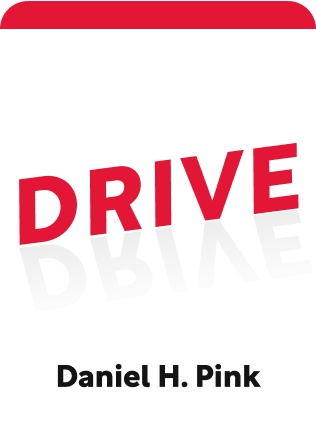

This article is an excerpt from the Shortform book guide to "Drive" by Daniel H. Pink. Shortform has the world's best summaries and analyses of books you should be reading.
Like this article? Sign up for a free trial here .
What is autonomy in the context of motivation? How does autonomous motivation improve performance?
Autonomy gives you more internal choice over what to do and how to do it. Autonomous motivation has been associated with: greater conceptual understanding, better grades, job satisfaction, higher productivity, less burnout, faster company growth, and better psychological health. According to Daniel Pink, autonomy is acting with internal choice but it is different from independence.
In this article, you’ll learn about the autonomy component of motivation.
Autonomy
Autonomy does not imply doing it alone and refusing the help of others. Instead, autonomy means acting through internal choice and not being driven by external pressure.
Why is autonomy so uncommon in today’s work environments? Historically, “management” has assumed the worst of people. “Left alone, workers get distracted and shirk their responsibilities. Without being told what to do, people will screw it up. Therefore, workers must be monitored and micromanaged.”
According to Daniel Pink, autonomy is a naturally wired drive. Look at infants and children – how many are not naturally curious, internally driven to explore the world without dangling rewards? Instead, we have our intrinsic motivation beaten out of us through rigid, paternalistic environments: home, school, and work.
To develop an intrinsically motivating environment, you need to allow people to rekindle their autonomy. Counter-intuitively, people who are given more freedom may be even more accountable for their work, not less (maybe because when given more trust and freedom, they don’t want to let their employer down).
For best results, people need to have autonomy over four major dimensions of their work: the task, the time, the technique, and the team.
Autonomy Over Tasks
In typical work environments, the entirety of what you work on is decided. Instead, people should enjoy some autonomy in choosing what they work on.
One common way to implement this is by giving 20% time to employees to work on any project they want. The only requirement is that the project should further the goals of the organization somehow.
In some cases, this has seemed to unleash employee creativity:
- In the mid-20th century, 3M gave technical staff 15% free time. Post-its arose from this free time.
- For much of its early history, Google gave 20% time to employees, leading to famous projects like Gmail, Orkut, and Google Translate.
- Georgetown University Hospital gives nurses autonomy to conduct personal research projects.
Companies that give 20% time believe it signals trust in their employees to do good things and stay efficient when the leash is taken off.
(Shortform note: in 2013 Google officially repealed 20% time. Employees found it difficult to truly spend 20% time on personal projects – those who worked more on company projects seemed to have higher performance reviews; managers put pressure on employees to work on official projects instead. This doesn’t mean it’s now a bad idea, but rather that it may have become inappropriate as Google matured.)
Another way to give autonomy over tasks is by holding a FedEx day, where workers are given freedom to work with a team on a project of their choice. The only restriction is that they must ship the project within a day (hence FedEx). These are also known as “hack days.”
Autonomy Over Time
Many work environments require facetime at the office during specific hours. Checking in late or leaving early are signs of negligence. Some workers are now expected to be available by text, email, or Slack around the clock. This leash crowds out personal time, reduces satisfaction, and increases turnover.
The antidote is a Results-Only Work Environment (ROWE), where the focus is on the work itself rather than when they do it. Workers still need to meet goals and deadlines, but as long as they achieve their goals, they can work whenever and wherever they want.
Some companies like Netflix have pushed the boundary even further, giving unlimited vacation days. (Shortform note: critics of unlimited vacation time argue it gives less guidance on what is acceptable and creates social pressure to take even less vacation than when the limits are clearly spelled out.)
Some work structures, like the legal billable hour, are so centered around time that ROWE seems hard to implement. But some legal firms are moving toward flat rate billing for projects, rather than a time-based fee.
Autonomy Over Technique
Even when workers doesn’t have full autonomy over what they do, they can still enjoy autonomy over how they do it. Work doesn’t need to be micromanaged – given goals to hit, people can figure out the best way to achieve them.
Examples:
- Zappos gives support staff freedom on how to serve the customer, doesn’t require scripts, and doesn’t monitor calls. This has famously led to some support calls lasting hours, with a very satisfied customer on the other end.
- JetBlue hires remote support staff and allows them to answer customer calls from home. This allows drawing from a deeper pool of talent, like parents, retirees, and people with disabilities.
(Shortform note: the book doesn’t go much further beyond support staff agents, but you can generalize this idea to most types of work. Make sure the worker understands the big picture – why it must be done, and what the desired result is – and trust that the worker will figure out the details herself.)
Autonomy Over Team
In most companies, you don’t get a choice of whom you work with. But this can lead to especially frustrating scenarios when you can’t stand certain teammates.
Some companies are experimenting with allowing people to choose their team:
- At Whole Foods, candidates work 30-day trials with a team, and the current employees decide whether to hire the person.
- At Facebook, new engineers spend 6 weeks in a coding boot camp. Then they interview with different teams and decide which to join.
- For 20% time and FedEx days, people can choose their own temporary groups to work with.
Across tasks, time, technique, and team, different people may have different preferences for how much of each type of autonomy they want. Some people may even want no autonomy for one or more of these. Try to match the best autonomy to each person.

———End of Preview———
Like what you just read? Read the rest of the world's best book summary and analysis of Daniel H. Pink's "Drive" at Shortform .
Here's what you'll find in our full Drive summary :
- Why you may be feeling unmotivated and unsatisfied at work and in life
- Why financial rewards aren't enough to keep employees motivated anymore
- The three components of intrinsic motivation






